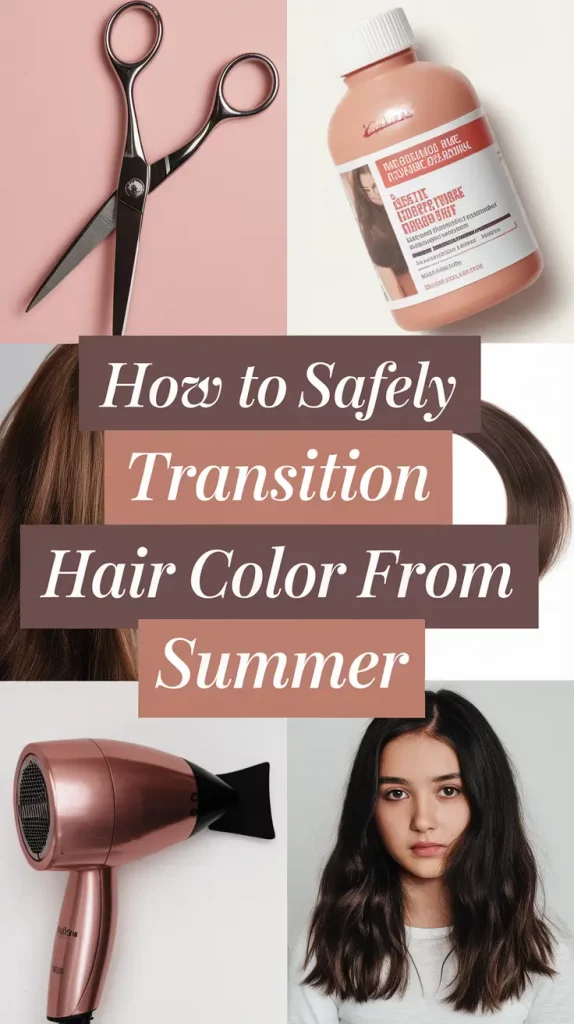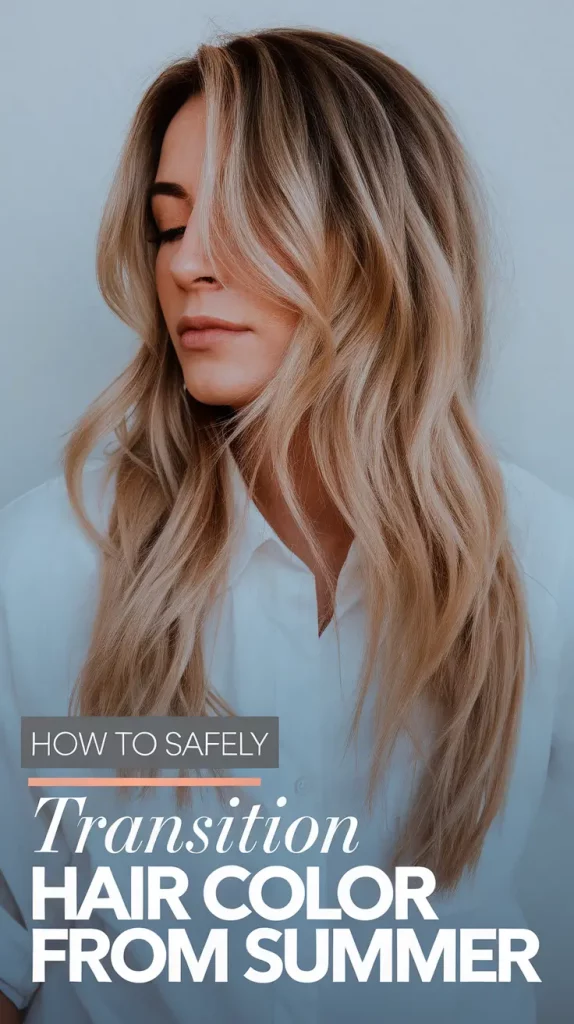How to Safely Transition Hair Color from Summer to Fall — 2025 Guide
Have you ever glanced in a mirror at the end of summer and thought to yourself, “what on earth happened to my hair?” Trust me, I have for far too long. After months basking in the sun and rocking the saltwater swim gold, my hair dauntlessly loses its magic, looking lackluster and frayed.
My fall schedule caused me to resist the urge of changing to deeper and darker tones for my hair considering I had no plans of dying it until after summer. For people who have a busy schedule on a daily basis, dyeing the hair becomes a matter of time optimization, since the desire to flaunt a newly dyed head of hair is always present and hence, color lightening versus moisturization is bound to happen.
In this post, I’ll break down the simple yet effective ways I implement transitioning from the summer hair vibes to the polished sweetheart look for fall. Expect actionable and practical insights, personal experiences, and some unconventional tips I now consider essential to every transition that bring you step-by-step to a seamless shift from carefree warm-weather hair to a perfect fall finish.

Step 1: Evaluate Your Current Hair State Before Making Any Changes
This is where things get interesting:
Sunny days, outings to the beach, and social gatherings always put a smile on my face. However, the minute my summer breaks and vacations come to an end, my hair texture resembles that of straw. The minute I want my desired color, I need to peel my eyes away from monotonouss conditioning of my hair.
What to know:
Changing hair color while already weakened hair can result in breakage and inconsistent outcomes. Hair health analysis is crucial.
Key signs of concern:
- Dryness: Is your hair feeling parched and brittle?
- Split Ends: Look for breakage at the tips — a common aftermath of summer.
- Fading and Uneven Color: Has your once bright color turned brassy or patchy?
What I do:
To restore moisture, I deeply condition first which keeps my hair healthy. My favorite is a mask rich in argan oil and keratin. I let it sit for about twenty minutes so the hydration fully absorbs. Then, I gently remove any split ends. Even tiny trims improve how fresh and healthy color appears.
Takeaway:
Skipping the health check for the hair is never condoned. Repairing strands prior to dyeing increases safety, while improving results.
Step 2: Select the Best Suiting Transition Shade After Summer Hues
It started with something I thought I’d hate:
Moving back to darker shades after being a bright blonde felt daunting for me. However, having a more natural look comes from going a bit deeper than what you were before turning blonde.
Suggested Colors for Fall:
- Honey Blonde with Caramel Lowlights: Keeps warming tones while adding depth.
- Chestnut Brown with a warm undertone: Complements sun-kissed colors.
- Dark Chocolate with Subtle Highlights: Not overly rich.
- Copper with Gold Undertones: Bold but still autumn inspired.
Why these work:
These hues keep a bit of that summer radiance while preparing for the autumn transition. The key is to retain softness with multi-dimensional and not dark and matte.
My takeaways:
The shift from bright blonde to dark brunette is often very harsh and unflattering. By selecting a blended shade in-between makes the transition visually soft.

Step 3: 3 Steps on How to Prep Your Hair for Coloring
These are the steps that fixed my issues:
Over the years, I’ve learned that preparing for a color change makes a world of difference in the results. This is my routine:
- Deep clean: Eliminate product buildup with a clarifying shampoo.
- Hydrate: Days before a color change, apply a hydrating hair mask.
- Protect: Prior to the salon, use a leave-in conditioner to strengthen the strands.
The science behind it:
Hair that is clean and hydrated will absorb color more evenly and adhere to it better. Neglecting these prep steps will result in dull, lifeless color and uneven hair color.
Step 4: Techniques for Color Application, Ensuring a Perfect Transition
Here is where everything changed:
An error that I always made was opting for a simple, one color all-over color. The result was always very harsh looking.
Now, I blend colors as it creates a softer transition and achieves a more natural look.
Achieving the best results that appear effortless:
- Balayage: Maintains some summery brightness while deepening color.
- Root Smudging: Darkens roots while preserving lighter ends.
- Lowlight Streaks: Subtly enhances the hair while adding depth.
- Toning Glaze: Added shine while neutralizing brassy tones.
My observations
A more effortless and maintenance-friendly option is the use of blending techniques as opposed to covering which results in a far more flattering finish. Plus, it grows out naturally!
Step 5: Maintaining Your Newly Colored Hair – Nurturing Your Hair After Coloring
What I missed out on was:
The most difficult part for me, at least, began after applying color. Without diligent maintenance, any hue will be lost too quickly.
My tailored routine for maintenance post-coloring:
- Color-Safe Shampoo: Designed specifically to protect against color washout.
- Deep Conditioner: Weekly intensive treatments for hydration and luster.
- Hair Color retention: A necessity to combat hair color fade.
- Satin Pillowcases: A pillowcase that minimizes hair tangles during sleep and color fade.
Pro advice:
If your new shade appears warm, don’t forget to use a blue/purple shampoo once a week to remove brassy tones.
Step 6: Track Your Results — Before & After Analysis
| Step | Before Coloring | After Coloring |
|---|---|---|
| Hair Condition | Brassy and uneven | Soft and vibrant |
| Shade | Brassy light blonde | Honey rich with caramel lowlights |
| Texture | Frizzy and rough | Hydrated and smooth |
Seeing is Believing:
Capturing photos of progress allows me to track my journey and identify areas that need improvement.
Conclusion
Transitioning in color does not have to be fearful or difficult causing damage. It simply lies in the preparation and the method…analysis of the hair prior to changing, selecting the appropriate color for the transition, and preparing the hair results in a smooth change from the bright wake of summer to the warm embrace of fall colors.

